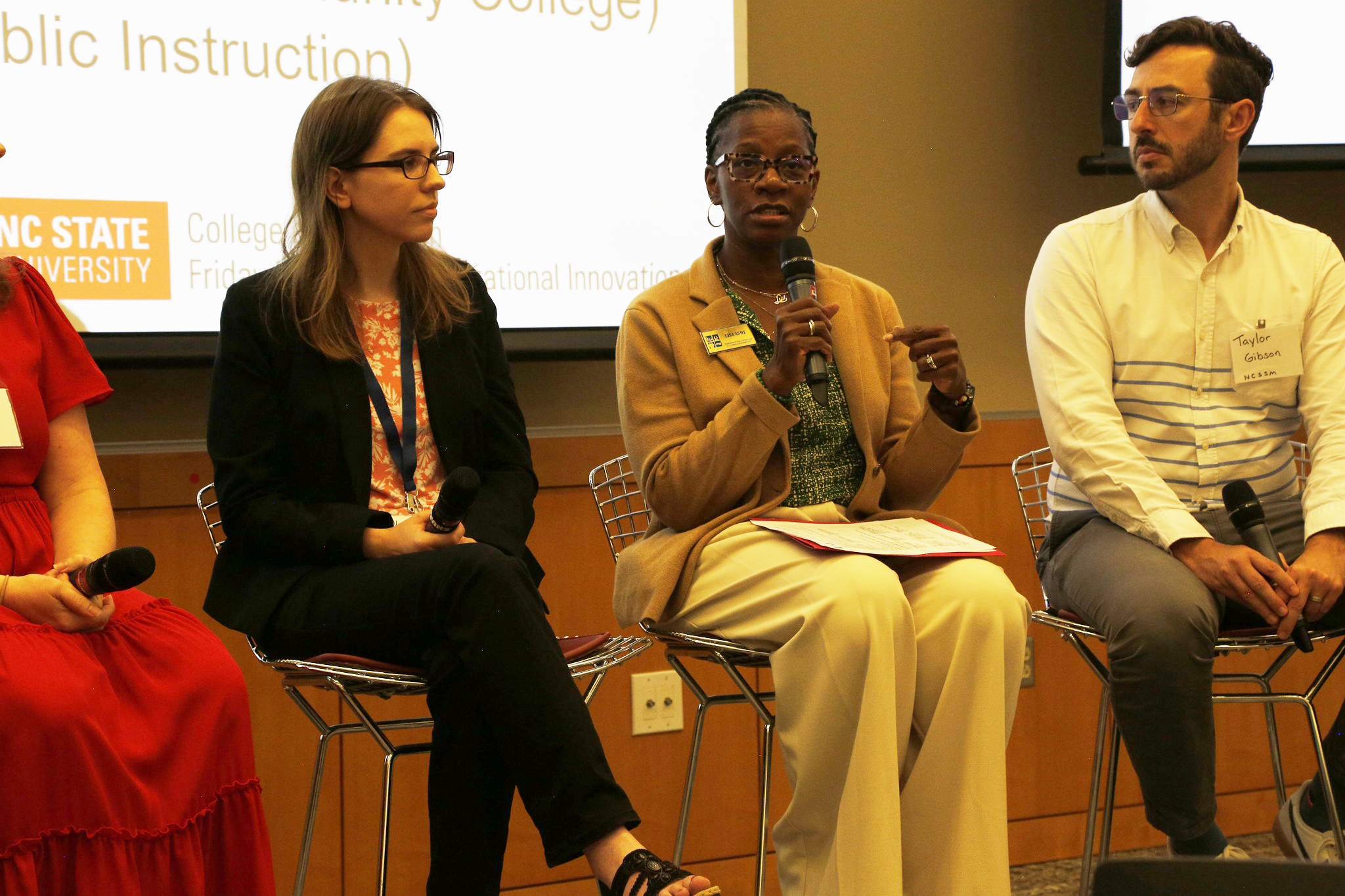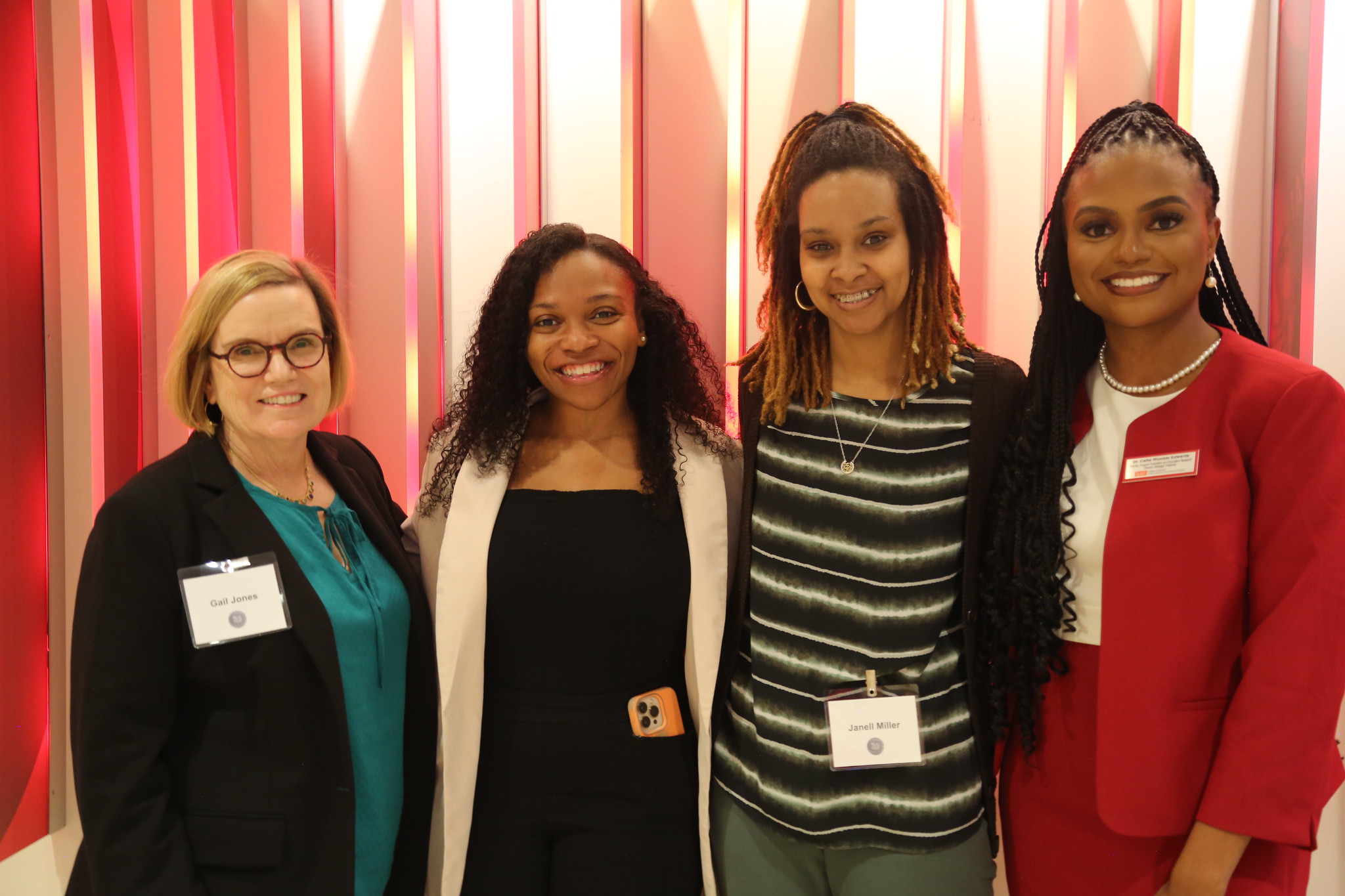North Carolina Mathematics Educators Discuss Future of Statistics, Data Science Education at Regional Conference

When Advanced Placement Statistics teacher Dash Young-Saver discovered there was a 2% passing rate for the AP Statistics exam for his region, he wanted to make a change and “skew the script” toward a higher passing rate. Young-Saver removed boring, irrelevant math lessons from his curriculum and replaced them with topics his students cared about, such as how much social media influencers make and how to tell if voting mattered. That year, 42% of his students passed the AP exam. He now posts over 300,000 free online lessons on his website, skewthescript.org, and serves over 20,000 account holders with lessons that boost math engagement and achievement.
Young-Saver was the keynote speaker for the first day of the Electronic Conference on Teaching Statistics (eCOTS), hosted by the Consortium for the Advancement of Undergraduate Statistics Education. His presentation was also featured during the Moving NC Forward in Teaching Statistics and Data Science 2024 Regional Conference, held in conjunction with eCOTS, June 13 at the Friday Institute for Educational Innovation. The event was co-hosted by the Hub for Innovation and Research in Statistics Education (HI-RiSE) at the Friday Institute, the Department of Statistics in the NC State College of Sciences, The Science House, the NC State Data Science Academy and the North Carolina School of Science and Mathematics.
The goal of the event was to convene North Carolina educators who engage in teaching high school and college statistics and data science, including those who prepare high school teachers, and give them the space to consider ways to move North Carolina forward in building capacity in statistics and data science education.
“With about 50 educators engaged, the energy and excitement for improving the teaching of statistics and data science in NC was evident,” said Hollylynne Lee, University Distinguished Professor of mathematics and statistics education in the NC State College of Education and senior faculty fellow at the Friday Institute. “It was important to bring together educators across the high school, community college and university levels to learn about what is currently happening in the state and how we can work to build a future where North Carolina leads the nation in preparing students with important data science and statistics skills for a fast-changing workforce and careers that utilize data for decision making. We hope that HI-RiSE can continue to provide spaces for such cross-sector collaboration to support the whole education ecosystem needed for making lasting changes in K-12, college and teacher education.”

During the conference, several themes emerged around challenges and opportunities to teach data science and statistics. First, educators were concerned with distinguishing data science from statistics. Data science has begun to spread across the United States in K-12 education. According to Data Science 4 Everyone, about 30 states have implemented some sort of statewide data science education offering, whether adding it to a state course catalog, offering teacher professional development, or adopting standards or frameworks for data science. But, data science can be seen in multiple disciplines, from math and science to continuing technical education.
“I think there’s some great things that can really bubble up to create movement because I think this [data science] is still relatively new,” said Lee Ellen Harmer, partnerships manager at Data Science 4 Everyone. “It’s been in place, but to really move it forward, we all really have to come together. It’s not just something that we can just do at a district level or just do in higher education. We’ve got to work together to really create these pathways and integrate this across disciplines.”
Next, teacher preparation was considered a high priority, from accessing professional development for teaching statistics to finding resources. Others addressed their concerns for changing the mindset from teaching to a test to incorporating data science and statistics into the current curriculum.
“As tools and techniques evolve, we’re bringing in new teachers who haven’t seen those things before,” said Taylor Gibson, Dean of Data Science & Interdisciplinary Initiatives at the North Carolina School of Science and Mathematics, during the conference’s panel, entitled ‘What is Happening Now in Teaching Statistics and Data Science in NC and What is on the Horizon?’ “We have existing teachers who don’t have the time to keep up with their pedagogy and their technological acumen to be able to do this the right way. It takes time, it takes resources, to make sure that your instructor has everything they need to deliver even an intro to data science class.”
Since 2016, Lee and her HI-RiSE team, co-directed by Senior Research Scholar Gemma Mojica, have been addressing the need to prepare educators who are able to engage students in investigations of real-world issues using data. Two of the projects they lead are Enhancing Statistics Teacher Education with E-Modules (ESTEEM), which provides free, accessible tools that allow pre-service middle and high school mathematics teachers to engage with meaningful materials, and Invigorating Statistics Teacher Education Through Professional Online Learning (InSTEP), a free personalized online learning platform that allows teachers in grades 6-12 and up to develop their expertise in teaching statistics and data science. Both projects are funded by the National Science Foundation.
Another key issue addressed during the event was incorporating statistics and data science into current curricula across the education spectrum. Lisa Ashe, a 6-12 mathematics consultant at the North Carolina Department of Public Instruction (NCDPI) and a panelist during the “What is Happening Now” panel, said that her team is looking for ways to authentically embed data science and statistics so that teachers can incorporate them into mathematics classes. NCDPI plans to release updates and a review phase of the state’s math standards this fall. Ashe also stated the importance of looking at what statistics looks like in postsecondary education to guide what is required in K-12 math education. Participants agreed on the importance of educators across the education spectrum coming together to have these conversations.

“We’re all in this room together: K-12, community college, undergrad to graduate,” said Kristi Ramey, a math teacher at Cary Academy. “And we’re all part of this new journey. It’s not okay for us to be in a silo anymore. We need to communicate.”
Looking toward the future of data science and math education, many agree about the importance of relevancy and student engagement in learning.
“I would love to see students excited working with data,” said Gibson. “I think so many of them, once they get into it, realize how empowering it is and how fun it can be. If something is fun and it’s engaging for students, they’re going to pay attention and they’ll realize really quickly the power of it and the learning will come naturally.”


